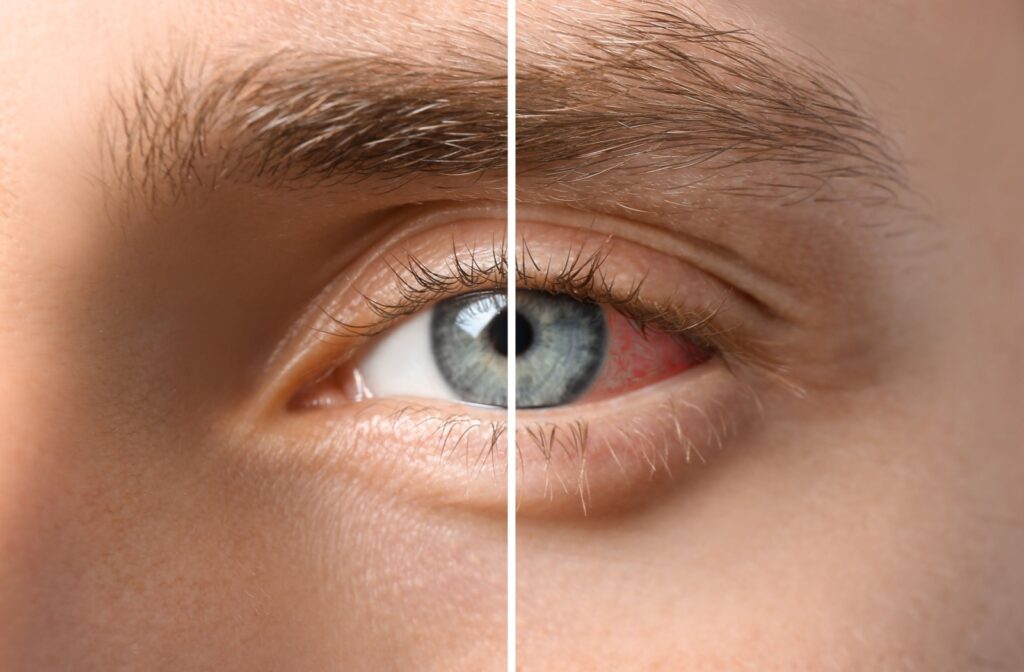Meibomian gland dysfunction (MGD) is a common eye condition that affects tear quality and overall eye comfort. Many people struggling with dry, irritated eyes wonder if these vital glands can regenerate.
While Meibomian glands can’t fully regenerate once damaged, their function can often be improved, especially when treated early. With proactive care and advanced treatments, it’s possible to preserve existing gland health, revive partially blocked glands, and find lasting relief.
What Are Meibomian Glands?
Meibomian glands are tiny oil-producing glands along the edges of your upper and lower eyelids. Each eyelid has about 25 to 40 of them. Their job is to produce meibum, an oil that helps keep your eyes moist and prevents your tears from evaporating too quickly.
When these glands become blocked or stop working properly, your eyes can start to feel dry, gritty, or irritated. Even everyday activities like reading, using a screen, or spending time outside can become uncomfortable.
If left untreated, MGD can lead to blurred vision, light sensitivity, or frequent eye infections. That’s why early diagnosis and treatment are key, not just for comfort, but for long-term eye health.
Causes of Meibomian Gland Dysfunction
MGD can develop due to age, lifestyle, environment, or medical conditions. After age 40, these glands naturally slow down and are more likely to become blocked.
Long hours on screens reduce blinking, which affects oil release. Dry climates, air conditioning, and frequent contact lens wear can also contribute. Health conditions like rosacea, autoimmune disorders, and hormonal changes may impact gland function. Poor eye hygiene, such as not removing makeup properly, can lead to buildup and blockages over time.
Healthy habits and early treatment can help protect the glands and maintain their function.

Can Meibomian Glands Be Restored?
Restoring Meibomian glands isn’t always straightforward. If the glands are severely damaged or have completely atrophied, they can’t grow back. But if they’re still partially functioning or just blocked, the right treatment can often improve their performance and provide long-term relief.
With early care, it’s often possible to prevent further gland loss, improve remaining gland function, and manage symptoms effectively.
Treatment Options for Meibomian Gland Dysfunction
Managing Meibomian Gland Dysfunction often requires more than just home care. Thankfully, modern eye care offers several advanced treatment options designed to improve gland function, reduce symptoms, and protect long-term eye health. Depending on the severity of your condition, your optometrist may recommend one or a combination of the following therapies:
- Intense Pulsed Light (IPL) Therapy
Originally developed for dermatological conditions, IPL therapy has shown promising results for MGD. By reducing inflammation and breaking down blockages, it helps restore proper gland function and stabilize the tear film. - Thermal Pulsation Therapy
Treatments like LipiFlow combine gentle, controlled heat with precise eyelid pressure. The device warms the inner eyelids while gently massaging the outer lids, helping to melt and express thickened oils trapped in the Meibomian glands. This direct approach can restore more natural oil flow and provide long-lasting relief for many patients. - Radiofrequency (RF) Therapy
RF therapy uses externally applied radiofrequency energy to gently heat the skin and tissue around the eyes. While it also helps liquefy clogged oils, RF is non-contact and may also stimulate collagen production, improve eyelid tone, and reduce inflammation, making it a versatile option for supporting gland health and tear stability.
Lifestyle Changes to Support Meibomian Gland Health
In addition to clinical treatments, certain lifestyle habits can help protect and support your Meibomian glands. By making small, consistent changes, you can enhance treatment results and maintain long-term eye comfort.
- Improve Screen Time Habits
Excessive screen use reduces natural blinking, which is essential for spreading meibum across the eyes. Try following the 20-20-20 rule: every 20 minutes, look at something 20 feet away for 20 seconds. - Maintain Proper Eye Hygiene
Makeup, pollutants, and debris can block gland openings over time. Gently cleansing the eyelids each day, especially before bed, can help prevent buildup and maintain gland health. - Support Overall Eye Health
Lifestyle factors like chronic stress, poor sleep, and lack of hydration can impact the eyes. A well-balanced routine that supports your overall wellness will benefit your eyes, too. - Focus on Nutrition
Anti-inflammatory foods and omega-3 fatty acids (found in fish, flaxseed, and walnuts) support healthy oil production and reduce inflammation around the glands.
Taking the First Step in Meibomian Gland Care
While complete regeneration isn’t possible, proactive management can significantly improve eye comfort and health. We’re here to help with early diagnosis and personalized treatment plans tailored to your needs.
Take the first step toward lasting relief by booking a comprehensive eye exam at Eyestyle Eyecare. Visit us in South Surrey or Kelowna to get started.



